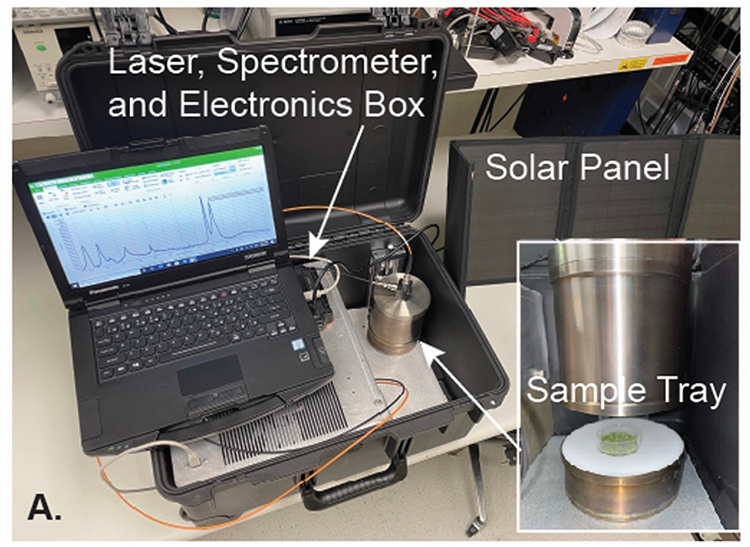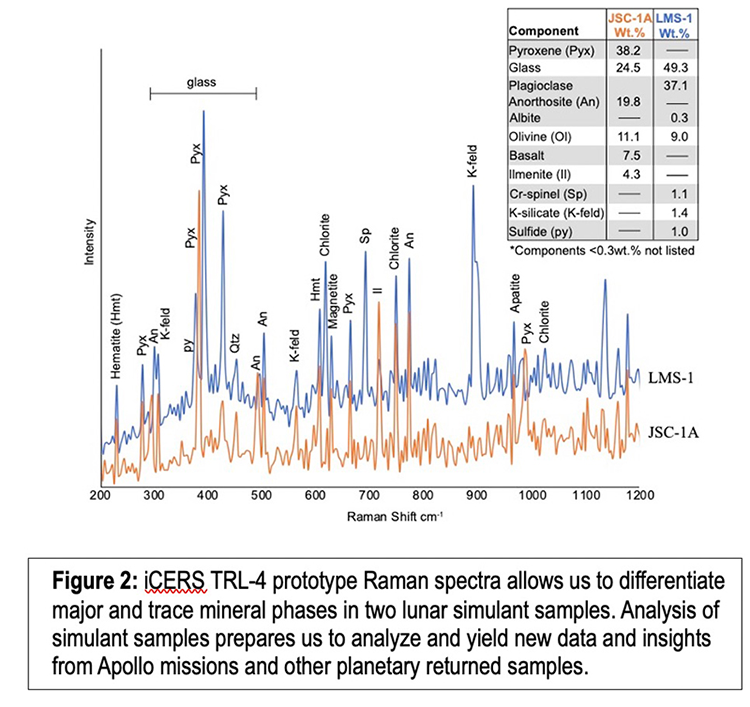Background
Samples returned from other planetary bodies provide us with the opportunity to learn about the origin and evolution of the solar system, to assess the potential for life elsewhere, and to determine the resources available for future human exploration beyond Earth. Raman spectroscopy is a primary analytical technique for returned sample analysis because the composition of returned samples may be determined without damaging them. Additionally, field-portable Raman spectrometers are becoming an important tool in field-based studies to understand habitability of extreme environments on Earth, which are analogs of planetary environments.
Approach
We leverage the integrating Cavity Enhanced Raman Spectroscopy (iCERS) breadboard design from co-investigator Retherford’s PDIR 15-R8834 to build a research-grade analytical iCERS instrument, which can be used for sample return analyses for several years with a companion field-portable version for terrestrial analog sample analysis (Figure 1). This instrument, named Astronaut Raman for ISRU and Astrobiology (ARIA) provides field-based VIS (638 nm) Raman capabilities to establish scientific leadership in planetary-focused Raman spectroscopy by completing the following capability development focused tasks:
Design and fabricate a field-portable research grade iCERS Raman instrument.
Develop calibration, sample handling, and analysis methods.
Determine the iCERS instrument detection limits for rocky and icy planetary analog samples.
Demonstrate:
Returned sample laboratory capabilities: Apollo sample analysis.
Field-based capabilities: planetary analog field site.
Accomplishments
This year we submitted a utility patent for the integrating cavity design. We also set up an optical laboratory for ARIA in building 82 and developed sample handling techniques for returned samples, which must be preserved given their rarity. We completed the field portable instrument, with the exception of the integrating cavity, which is currently being manufactured and will be incorporated into the instrument. This will allow us to analyze planetary terrestrial analog samples in situ anywhere in the world (Figure 2). We also added a standoff Raman operational mode, which enables point measurements of planetary analog and returned samples. This design will be leveraged under external funding to develop rapid scanning of samples in the field to downselect samples for high-resolution iCERS measurements. Additionally, we submitted two NASA PSTAR proposals that would enable field testing and additional development of ARIA. We were awarded NASA Habitable Worlds funding to analyze distribution of organics in ocean world analog ices.

Figure 1: The protable iCERS instrument, now named ARIA, employs a compact, modular design to reduce mass and power requirements. This ruggedized, modular field system, to determine the organics and minerals present in planetary analog samples.

Figure 2: iCERS TRL-4 prototype Raman spectra allows us to differentiate major and trace mineral phases in two lunar simulant samples. Analysis of simulant samples prepares us to analyze and yield new data and insights from Apollo missions and other planetary returned samples.
